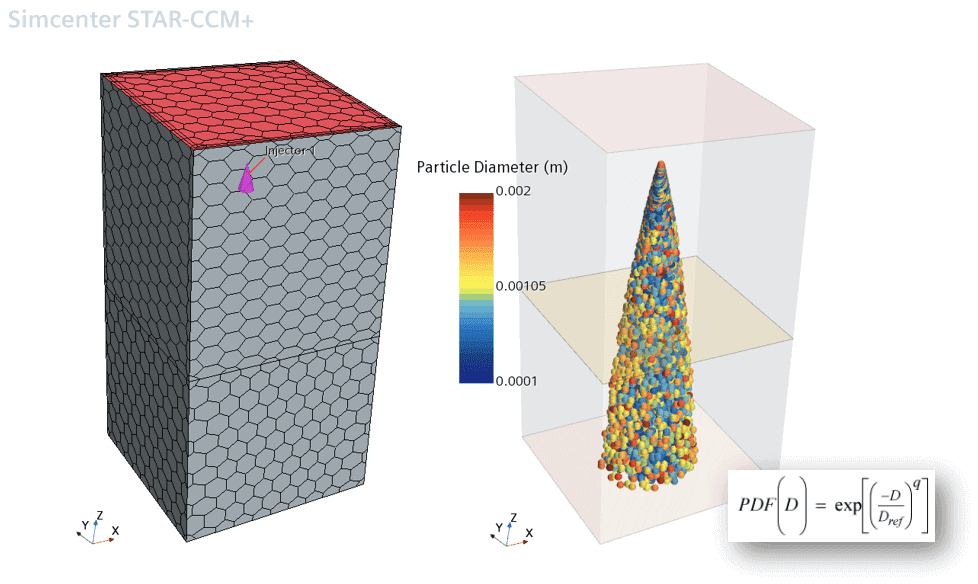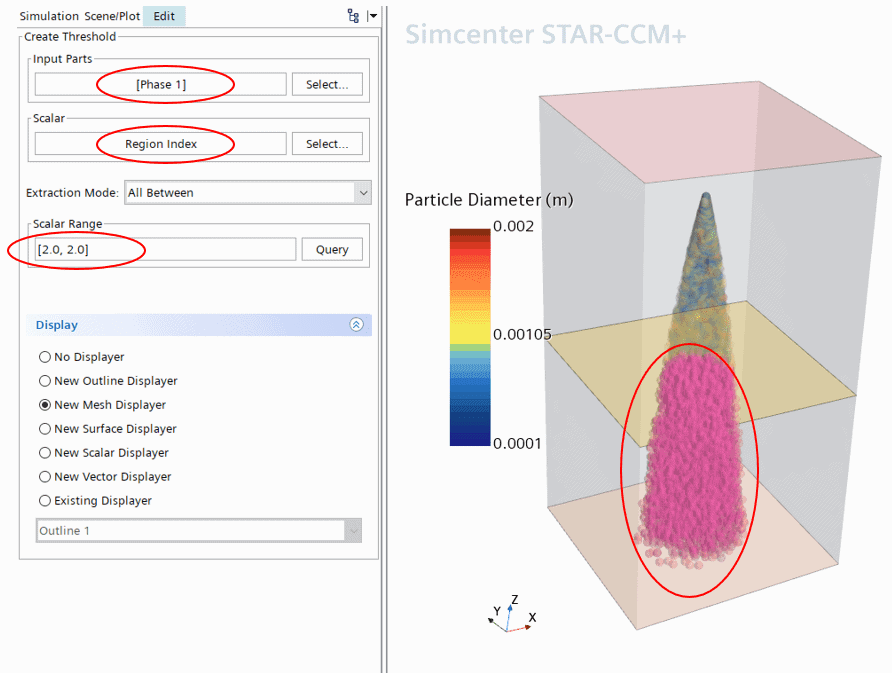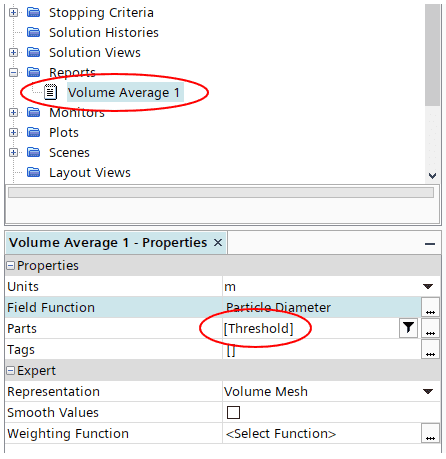This week’s blog post will cover some tips and tricks when dealing with Lagrangian particles (also applicable for DEM). It is sometimes necessary, or desired, to look at particles in a specific region. It is of course possible to visually observe particles located in specific location, in a scene. But let’s assume that you want to run a report, like a volume average report on a limited volume of particles. How can this be achieved, when the default selection of a report is the phase that we are concerned with and not a volume?
There are a couple of ways of doing this, the method depends partly on the setup of the simulation and the shape of the control volume you are interested in. Both methods use the derived part Threshold in some sense, but the scalar field that is used to create the threshold differs between the methods. Let’s go over these methods, but let us start by looking at a simple example where we apply these methods.
The example
The example is a generic box. The injector for our Lagrangian phase is a generic cone injector, and our distribution of particles is a Rosin-Rammler distribution with liquid droplets between 0.1 and 2 mm. (The probability density function for Rosin-Rammler can be seen in the lower right corner.)

As you can see the geometry is split up in to boxes here, with a conformal interface connecting the two boxes. Perhaps, this can give a hint to how the first method operates.
Method 1
Both methods will use thresholds to function. In this first case you split the calculation domain in to separate regions for your control volume. This is recommended to do with conformal interfaces for minimal interpolation error, mainly for the continuous phase. If we assume we want to use the lower box for our control here, we need to check what index it has. This can be found in the properties window of the Region once you highlight it or select in in the part tree.

In our case the region index for the region is 2. With this information we now create a threshold that uses the scalar field of region index like below. In the creation of the threshold, it is important that that the input part is the Lagrangian phase (this is essentially how we split up the Lagrangian phase, regardless of which scalar field we are using), the scalar is the region index and the scalar range is 2 (here I use all between all between mode, limited to 2 and 2). In the off chance that the index of your region is 0, (it is possible) use the extraction mode: all below and set the value to 1. When the threshold is created, it can be highlighted in the scene. This will show that we have made the correct selections for the threshold to only include particles from our Lagrangian phase in the lower region.

After this it is only a matter of selecting our threshold when we create a report. And what is important here is of course that we select the threshold and not the phase in the parts-selection. This can then be connected to a monitor and a plot as usual.
Method 2
This is the more pragmatic method, as it does not use the split up into different regions. It uses instead a threshold on a threshold on a threshold. The three layers of threshold for this example is to cover all the directions X, Y and Z in the spatial directions. We use the same example here, where we are interested in creating only a small box in the lower part of our Lagrangian field.
A threshold of our Lagrangian phase in Z-direction, then a threshold with the first threshold as input part for X-direction, and the same in Y-direction. Note here that it is important to select the Parcel centroid value and not position, since position on a large background mesh will give a poor selection of what particles to include. It then refers to particles in cells located within the range, while parcel centroid looks directly at particle location.
Note that other coordinate systems can be used also for spherical and cylindrical evaluation shapes.

I hope this has been useful in your post processing of Lagrangian particles. If you have question, do not hesitate to reach out to support@volupe.com.
Author

Robin Victor
+46731473121
support@volupe.com
